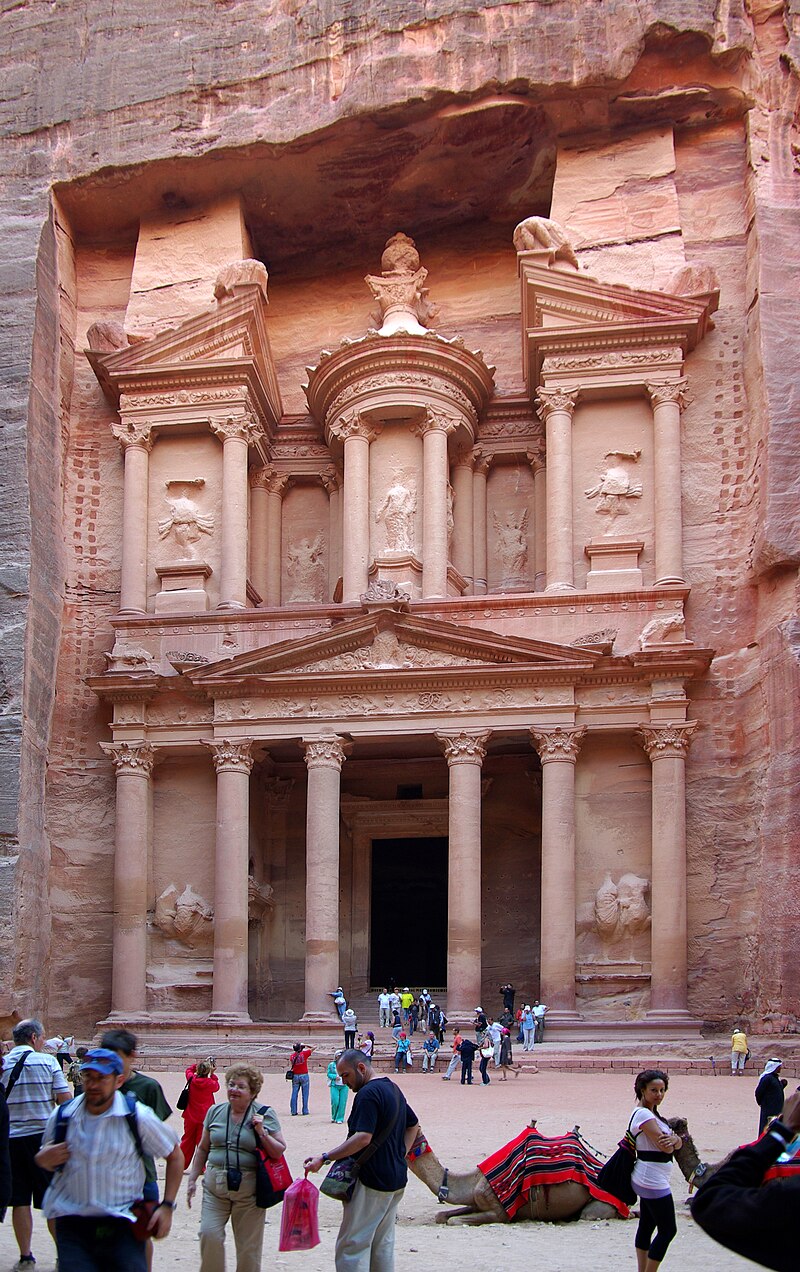Landschlacht, Switzerland, 8 October 2017
It may be the greatest of romances, the strongest of friendships, the warmest of families….
Yet travelling together will put these bonds to the test, for there will come a time when the trip is not ideal for all the travellers simultaneously.
For some travelling duos, these moments may be rare and short in duration.
For other travelling pairs, these moments can fracture the relationship permanently.
Simply put, one of you doesn´t want to do what the other one wants to do, so idyllic separate solitude is sacrificed for the travelling partnership, as one person compromises to the other for the sake of the relationship.
Sometimes the compromise turns out not to be so bad after all and the compromised finds him/herself actually feeling enjoyment despite all his/her expectations to the contrary.
Sometimes the compromise is bitterly regretted and the compromised hates both him/herself for making the compromise and the person who demanded the compromise.
I am reminded of the Eiffel Tower in Paris.

My travelling companion and I stood directly beneath the arch of the Tour d`Eiffel, but she looked at the line-up and looked at the price, and adamantly refused to allow herself or me to join the queue and ascend the Tower.
I argued that this was an golden opportunity.
We did not know when, if ever, we would have the chance to do this again, and that, wait and expense be damned, it was well worth it to do so.
She would not budge.
I compromised.
I still have yet to ascend the Tour d´Eiffel and the uncertainty of life does not reassure me that I might ever have that chance again.
Thus there remains a sour feeling inside me and a source of great consternation everytime I think about it.
Lago di Como, Italia, 1 August 2017
We had a day ticket to cruise the Lago di Como and, to be fair, we could not possibly see everything that there was to see and be able to return back to the city of Como on the last returning boat.
But, despite the additional expense, would it have been so tragic had we visited the Isola Comacina, and then arranged passage from there back to the mainland then taken a bus back to Como?
She would not budge.
I compromised.
Prior to the great discussion regarding a visit to Isola Comacina, we visited the Villa Carlotta in Tremezzo and the Villa del Balbianello at Dossa d´Avedo.
The Villa Carlotta is a villa and botanical garden in Tremezzo, located on the lakeshore, facing the Bellagio Peninsula and the mountains surrounding the Lago di Como, which can be seen from the Villa windows or from the terraced gardens.

The Villa Carlotta is a place of precious beauty, combining both natural and manmade masterpieces in perfect harmony.
The Clerici family had risen from rural origins to become successful silk merchants.
Milanese Marquis Giorgio Clerici became a Senator in 1684 and six years later he decided to establish a country estate on ancestral lakeside land at Tremezzo.
The estate was complete in its initial form by 1695 and finally completed in its present form in 1745 by Giorgio`s great grandson Anton.
When Anton died in 1768, he had spent most of the family fortune building the Palazzo Clerici in Milano.
Anton´s daughter Claudia sold Villa Carlotta in 1801 to the banker/politician Giovanni Battista Sommariva.
Above: Bust of Giovanni Battista Sommariva (died 1826) by Bertel Thorvaldsen
Sommariva had risen from being a barber´s apprentice to a position of power in Napoleon Bonaparte´s government in northern Italy.

Above: Napoleone di Buonaparte, aka Napoléon Bonaparte (1769-1821)
In 1802 Sommariva was a candidate to be the Vice President of the Republic of Italy, but Napoleon selected instead Francesco Melzi d´Eril for the post.
With his political ambitions thwarted, Sommariva retired from public life and devoted his time to collecting art.
Sommariva added balconies to take in the lake view, a large clock on the Villa facade, patronised a number of sculptors, constructed a domed family chapel and mausoleum, and transformed part of the property´s park into a romantic garden.

When Sommariva´s eldest son, Emilio, died, fighting in Spain in 1811, and his second son Luigi´s sudden death in 1838, Sommariva´s declining fortune was divided between his wife, Emilia, and numerous relatives.
The property was sold in 1843 to Princess Marianne, the wife of Prince Albert of Prussia.

Above: Princess Marianne of the Netherlands (1810 – 1883)
Marianne gave the property to her daughter Charlotte (in Italian, Carlotta), as a wedding present upon her marriage to Georg II, the Duke of Sachsen-Meiningen.
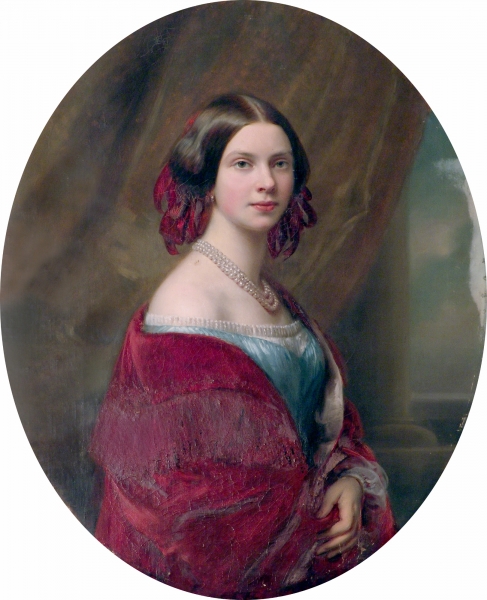
Above: Princess Charlotte of Prussia (1831 – 1855)
Her parents´ marriage was unhappy due to Prince Albert´s several affairs, and was finally dissolved in 1849.
Marianne began to live with her former coachman Johannes von Rossum, with whom she had a son.
Albert married a former actress Rosalie von Rauch, who bore him two sons.
The custody of Charlotte and her siblings Albert and Albertine was given to their father.
However their childless aunt Queen Elisabeth of Prussia took care of them.
As a young woman, Charlotte was highly eligible for marriage, due to her mother´s Dutch fortune and her father´s Hohenzollern noble connections.
In Charlottenburg on 18 May 1850, the nineteen-year-old princess married Georg, Prince of Saxe-Meningen, who was 24.
Already Georg had led a battalion from Meningen in support of the Prussians in the First Schleswig War against Denmark in 1849.
The two shared many interests, particularly with the theatre, as they were both ardent attendees.
During their engagement, they had even acted in amateur court theatricals together.
Charlotte had a talent for music and was professionally instructed by great artists of the period, even writing a number of military marches, songs and piano pieces.
The couple spent much of their time in Berlin and Potsdam but resided in Meiningen for the birth of their children.
Charlotte, whose marriage was a love match, had only a short time to enjoy the Villa Carlotta, for she died of childbirth complications at the age of 23 in 1855.
Georg and Charlotte had, prior to her death and the death of their one-day-old son, three other children Bernhard (1851 – 1928), Georg (1852 – 1855) who died a few months before his mother did, and Marie Elisabeth (1853 – 1923).
Duke Georg would later marry two more times, outliving his second wife Feodora (1839 – 1872) who provided him with three sons before she died of scarlet fever and would be outlived by his third wife, former actress Ellen Franz (1839 – 1923).
The Sachsen-Meiningens used the property as a private holiday home.

In 1857, author Ludwig Bechstein wrote a description of the Villa, which was published as Villa Carlotta: Poetische Reisebilder vom Comersee und aus den lombardisch-venetianische Landen.

Above: German writer Ludwig Bechstein (1801 – 1860)
Duke Georg, who had a passion for botany, dedicated himself to the development and enrichment of the Villa gardens introducing a great variety of rare and exotic species.

Above: Duke Georg II of Sachsen-Meiningen (1826 – 1914)
He died in 1914 at the outbreak of World War One.
Once Italy entered WW1 in May 1915 on the side of the Allies, the Villa, despite being owned by a German, was not confiscated by the Italian state, as were most other properties of other enemy aliens in Italy, but was placed under the management of the Swiss Consulate.
In 1921, the financial administrator of the Province of Como informed the owners of Villa Carlotta that the entire property was now the property of the Italian state, arguing that the Villa was of eminent national significance.
It was proposed in 1922 that the Villa would be sold at auction.
Local enthusiasts, led by Senator Guiseppe Bianchini and the Rotary Club of Milano opposed this, which lead to the Villa being entrusted to the Ente Villa Carlotta Foundation, constituted by royal decree on 12 May 1927.
This foundation is still responsible for the Villa.
The Villa consists of three floors, two of which are open to the public and serve as a museum, with art works by Antonio Canova (1757 – 1822), Bertel Thorvaldsen (1770 – 1844), Adamo Tadolini (1788 – 1863), Luigi Acquisti (1745 – 1823), Francois Hayez (1791 – 1882), Jean-Baptiste Wicar (1762 – 1834) and others.

Above: The Repentant Magdalene, by Antonio Canova

Above: Mars and Venus by Luigi Acquisti

Above: Palamedes by Antonio Canova
(Palamedes, the mythological inventor of chess, dice games and some of the letters of the Greek alphabet, was the only one, in Homer´s Illiad, who unmasked Ulysses´ deceit in pretending to be mad, thus forcing him to abandon his island of Ithaca and go fighting in the Trojan War.
Ulysses never forgave him and plotted against Palamedes who, for this reason, was killed.)
The botanical garden covers an area of about 8 hectares/20 Acres and is filled with cut hedges, orange and camellia trees, rhodendron and 150 varieites of azalea, cedars, palms, redwoods, plane trees and other exotic plants, and over 25 different bamboo species.
Fancy decadence.
Nice gardens.
Waitress at the Villa Café tells me “I love you.” after I give her a large tip.
Fickle woman tells the next tipper the same thing.
My wife and I then travelled onwards down the western shore of Lago di Coma to the tip of the small wooded peninsula of Dosso d`Avedo, not far from the Isola Comacina.
Yet another Italian Villa.
The Villa del Balbianello is reached by taking a stroll along the harbour of Lenno and through a park of skillfully pruned plane trees.

At the entrance to the FAI (Fondo Ambiente Italiano/Italian National Trust) property, we are greeted by a trio of young men who ask us to sign a petition and give a donation to assist those with drug addiction.
The views of the Lago di Como from here are breathtaking.
Unlike most of the grand villas on the Lago di Como, Balbianello was not initially built as the residence of an aristocrat.
A Franciscan monastery had existed on the grounds since the 13th century, and the two towers which still remain are the campanili of the monastery´s church.

After failing in his attempts to buy nearby Isola Comacina, Cardinal Angelo Durini (1725 – 1796) purchased the property in 1785.
In 1787 Durini converted the monastery building into a villa for use during the summer and added a loggia, which would allow visitors to obtain two different panoramas of the Lago.
The elegant loggia, built at the highest point of the property, opens on two sides to take in the extraordinary beauty of the Lago.

It has a central portico with two rooms on either side which Durini used as a library and a music room.
Cardinal since 1776, Durini dedicated himself to poetry and engagement with Lombardia literary circles, where he distinguished himself as a generous patron of the arts.
He was a great friend and benefactor of Giuseppe Parini, who dedicated his important ode La Gratitudine to him.

Above: Italian poet Giuseppe Parini (1729 – 1799)
Sadly the Cardinal was able to enjoy Balbianello only for a short time, passing away at the estate in 1796.
After the Cardinal´s death, the Villa passed to his nephew, Luigi Porro Lambertenghi (born 1780).
Lambertenghi was a high profile figure in a group of Milanese republicans and a member of the Carbonari, who wished to liberate Italy from the Austrians, who after the end of the Napoleonic era were restored their former possessions but now acted more repressive than they had previously in policing their domains.
The Carbonari desired both the liberation and unification of the entire Italian peninsula and frequently met at Balbianello to discuss their plans.
In 1815 Lambertenghi hired the republican writer Silvio Pellico to tutor his children.
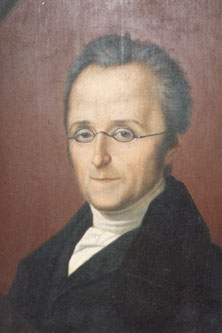
Above: Italian republican writer Silvio Pellico (1789 – 1799)
Pellico stayed for many years at Balbianello, which he recalled fondly in his Le mie prigioni (My prisons).
In July 1817, during a boating excursion from Como to Cadenabbia and Bellagio, Stendhal passed in front of Balbianello, where the oarsmen had difficulty in rounding the promontory, due to a sudden wind.

Above: French writer Marie-Henri Beyle aka Stendhal (1783 – 1842)
The rocky shoreline reminded the Frenchman of Scottish lakes and the romantic allure of “that heavenly lake” inspired his first chapters of The Charterhouse of Parma.
In 1821, following the failure of an attempted insurrection, Lambertenghi – having caught wind of his imminent arrest – fled Milano to take refuge in Switzerland, remaining there in exile until 1840.
He was sentenced to death in absentia in 1882.
Pellico was sentenced to 15 years in prison.
Before leaving for Switzerland, Lambertenghi sold Balbianello to his friend Giuseppe Arconati Visconti (born 1797)
Visconti made improvements to the gardens and the loggia.
To this day the balustrade in front of the church bears the Visconti emblem of a serpent with a man in its mouth.
Shortly after acquiring Balbianello, Visconti was also accused of participating in revolutionary movements.
Visconti eluded capture by the Austrian authorities by fleeing to Gaasbeek, Belgium and taking refuge in his maternal uncle´s castle 15 km from Brussels.

Above: Gaasbeek Castle
In 1924, Visconti was sentenced to death in absentia.
Visconti and his wife Costanza lived in Gaasbeek until 1839.
During the period of Visconti ownership, the Villa hosted politicians and writers including republican poet Giovanni Berchet (1783 – 1851), novelist Alessandro Manzoni (1785 – 1873), republican politician Giuseppe Giusti (1809 – 1850) and Swiss artist Arnold Böcklin (1827 – 1901).
(I wonder…. did the view of Isola Comacina from the Villa del Balbianello inspire Böcklin´s painting “Island of the Dead”?)
Gian Martino Visconti (1839 – 1876), Giuseppe and Costanza´s only surviving son, was a restless youth who embarked on a career in the military while nourishing a dominating passion for travel.
He undertook many journeys in Europe and Egypt.

His passion led him to undertake in-depth studies of Arabia.
In 1864, Gian was in Algeria, as documented by his book Viaggi a caso di un vagabondo – Gita ad Algeri (An Errant Vagabond – Out in Algeria).

Above: Pipelines across modern Algeria
In 1865, Gian embarked on his most ambitious trip – to the Arabian Peninsula via Cairo and Suez, crossing southern Arabia to Aqaba.

Above: Map of the Arabian Peninsula, 1720
He then went up the Wadi Arabah until he reached Petra, which was little known at the time.
Above: Petra, Jordan
After leaving Petra and surviving the perils of Bedouin attacks, Gian took refuge in Jerusalem before returning to Europe.
His Diario di un viaggio nell´Arabia (Diary of a voyage in Arabia) was one of the last records of an individual journey through places that would soon be visited by organised tourism and amply described in Baedeker guidebooks.
In 1873 Gian married radical republican Frenchwoman Marie Peyrat, a free spirited, eccentric, beautiful young woman, in Paris, witnessed by Emmanuel Arago and Victor Hugo.
However, the marriage was short-lived.
In 1876, Gian died from a disease contracted during his travels.
Marie stopped going to Balbianello a few years after the death of her husband and for more than 30 years Balbiandello was left to fall into a state of neglect.
In 1904 during a boat excursion with some friends, US businessman/politician Butler Ames saw the Villa for the first time and was determined to own it.
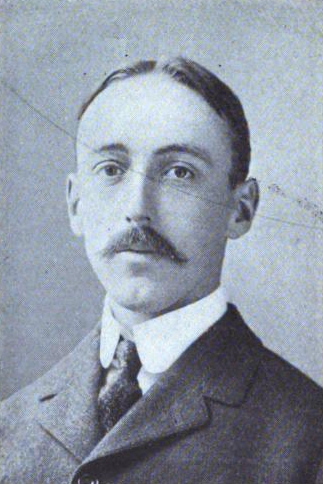
Above: Butler Ames (1871 – 1954)
Ames was immediately and irrevocably struck by the romantic beauty of Balbianello.

It was until 1919 that he was successful in obtaining ownership.
After purchasing the Villa, Ames and his wife Fifi spent all of their summers there, with the exception of World War 2, until Ames´ death in 1954.
In these years, their guestbook contained the names of a great number of visitors, including “America´s Sweetheart” Canadian actress Mary Pickford (1892 – 1979), former US First Lady Jacqueline Bouvier Kennedy Onassis (1929 – 1994) and US Democratic presidential candidate Adlai Stevenson II (1900 – 1965).
Ames´ will stipulated that his heirs could not sell Balbianello for 20 years after his death, but as soon as the period expired Balbianello was sold to Guido Monzino (1928 – 1988).
Monzino had admired and desired the Villa ever since he was young, when he used to spend his Sundays fishing with his father, who moored his boat near the Dosso d´Avedo promontory.

A businessman and entrepreneur, Monzino had been Managing Director of Standa, Italy´s 1st large department store chain, but deep in his heart he was, like Gian Visconti, an explorer and dedicated much of his time to this pursuit, participating in or leading a total of 21 major expeditions over a twenty-year period to all corners of the world. including being the 1st person to climb the north face of the Torres del Paine in Chile, the first to climb Kanjut Sar (the 26th tallest mountain in the world) in Pakistan, and the leader of the 1st Italian Expedition to climb the tallest mountain in the world, Mount Everest.
Above: Mount Everest
At the end of his long career, Monzino threw himself wholeheartedly into the restoration and refurbishment of the Villa.
He died in 1988 at the age of 60.
Unmarried and without any direct heirs, Monzino bequeathed Balbinello to the FAI.
In keeping with his final wishes, Monzino is buried in the estate´s underground icehouse in the garden.
Today the Villa del Balbinello is the most visited among the FAI properties with over 90,000 visitors annually.
A number of feature films have used Balbinello for location shooting:
- A Month by the Lake (1995), starring Vanessa Redgrave, Edward Fox and Uma Thurman
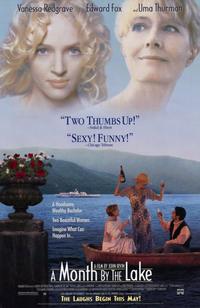
- Star Wars: Episode 2 – Attack of the Clones (2002), starring Natalie Portman and Hayden Christensen

- Casino Royale (2006), starring Daniel Craig and Eva Green

Across from the Villa del Balbianello, there is a small wooded island in the gulf known as the Zoca de l´oli.

The island, which is home to many archaeological remains, is about 600 metres long and a perimeter of two kilometres.
Isola Comacina is a wild place where one can wander through the ruins of nine abandoned churches.
In the late 6th century was a remaining stronghold under Francio (legendary founder of the Franks), even though the Lago di Como surrounding the island was controlled by the Lombard tribes.
The island was besieged by Authari of the Lombards, with Francio captured and sent back to Ravenna.

Above: King Authari of the Lombards (540 – 590)
The Lombards found the island to contain many riches left behind by local Roman loyalists.
A place once conquered by the Romans and then the Lombards became a refuge for the wealthy citizens of Como.
It developed into a centre of resistance, and in the turmoil of the Middle Ages, attracted an eclectic mix of dethroned monarchs, future saints and pirates.
Eventually it allied with Milano against Como, an unfortunate move, which led the Island to be sacked by the Comoese and razed to the ground.
The island was invaded in 1159 by Frederick Barbarossa and soldiers from the town of Como.
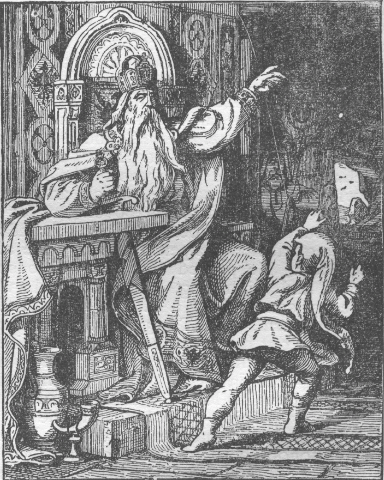
Above: Holy Roman Emperor Frederick I / Federico Barbarossa (1122 – 1190)
In 1175, Vidulfo, the Bishop of Como, cursed the island with the following words:
“The bells will never ring.
The rocks will never be placed one over the other.
Nobody will do here the work of the publican (businessman), the punishment a violent death.”
Abandoned for centuries, Isola Comacina was bought by a local, Auguste Caprini, who outraged Italy by selling it to the King of Belgium.
In 1917 the island was bequeathed to King Albert I of Belgium, who donated it to the Italian government, and entrusted to the Academy of Fine Arts in Milano.

Above: King Albert I of Belgium (1875 – 1934)
The Island is now administered by a joint Belgian/Italian commission.
Pietro Lingeri built three houses on the island in 1939.
His idea was to turn the island into a colony for artists.
The three artist houses were built in a rationalist style, made from local materials and without much decoration.
Since 1947 it has been home to an extremely exclusive restaurant, the Locanda dell´ Isola, whose clients have included English Lady Sarah Ferguson, the Duchess of York, and American singer Madonna Ciccone.
Today the Isola Comacina consists of the three artist houses, a restaurant, a café and a collection of archaeological sites.

My wife and I stood directly beside the landing dock of the Isola Comacina, but she looked at the line-up in front of the restaurant and looked at the price, and adamantly refused to allow herself or me to join the queue and ascend the stairs leading off the boat and above the island.
I argued that this was an golden opportunity.
We did not know when, if ever, we would have the chance to do this again, and that, wait and expense be damned, it was well worth it to do so.
I consider the personalities I have learned about today….
Princess Charlotte died young, limited travels;
Cardinal Durini died before his plans complete;
Gian Visconti, saw the world, died shortly after marriage;
Guido Monzino, saw the world, died alone.
Shakespeare once wrote:
“Gather ye rosebuds whilst you still can.”
One never knows if dreams unspoken will ever be realised, if places denied can ever be revisited.

Above: The Island of the Dead (1920) by Alfred Böcklin
Sources: Wikipedia / Facebook / Rough Guide to Italy / Lonely Planet Italy / Villa Carlotte / FAI, Villa del Balbianello

